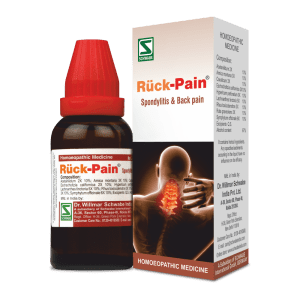
Bone problems
-
-18%

-
-18%
 Rated 4.85 out of 5 based on 13 customer ratings(14)
Rated 4.85 out of 5 based on 13 customer ratings(14)₹205.00₹168.10 You Save: ₹36.90 (18%)Add to cart
Showing all 2 results
The human body is a complex structure of skin, bones, muscles, tissues, nerves, and cells. The bony structure of the human body is that cage which gives shape and supports its structure to remain intact. It also helps in physical activities like locomotion to the physiological activities of the formation of new blood cells in the bone marrow. The bones are the living tissues that rebuild perpetually throughout life. New bone formation is faster during the early childhood and teenage years. This process slows down in the early adulthood years of life and is called natural aging.
The bone problem refers to all the diseases or injuries that have an impact on the human skeletal system. Physical injury, like the ones causing a fracture, is one of the several common bone problems. The structural integrity of the skeletal system weakens with the natural aging and bone problems. Calcium along with bone problems alters the bony structure destroying bone tissues and loss of bone mass. The bone problem can contribute to the easy breaking of bones. Different bone problems include:
- Low bone density and osteoporosis, which make the bones weak and fragile, easier to break
- Osteogenesis imperfecta makes the bones brittle
- Paget’s disease of bone makes the bones weak
- Cancer and infections of bones
- Other bone diseases, due to deficient nutrition, genetics, or problems of natural aging i.e., with the rate of bone growth or rebuilding
Symptoms of the bone problem:
- A waddling gait
- Bone pain
- Deformity of skeleton
- Fractures of bone
- Scoliosis
- Joint pain
- Limited movements (due to pain)
Causes of bone problems
Traumatic causes:
- Injury or blunt force trauma
- Fracture
- Disrupted supply to blood vessels
Non-traumatic causes:
- Long-term use of medication like corticosteroids
- Alcohol dependence
- Genetic defects of bones
- Chemical irregularities in bone protein
- Mineral deficiency
- Infections
- Osteoporosis
- Benign tumors of the parathyroid glands or gland enlargement
- Metastatic cancer
- Leukemia
Calcium also plays a crucial role in and along with bone disorders. Typically, women are more affected than men.
Types
Osteoporosis
Osteoporosis is a bone problem with loss of bone mass and destruction of bone tissues. It is also known as a porous bone. It results in weakening of the bones and makes them fragile easily breakable. Bones of hips, spine, and wrist are most often affected.
Paget’s disease of the bone
It is the second most common disorder of bone in the elderly after osteoporosis. It is a chronic bone problem in which bones become hypertrophied and deformed. The bone may turn dense but remains fragile, because of undue breakdown and deformation.
Hyperparathyroidism
It is a metabolic disorder. One or more of the parathyroid glands produce excessive parathyroid hormone. PTH intensifies the release of calcium through bones to the bloodstream. It results in bone resorption, which causes the bone to lose its density and hardens. Hyperparathyroidism like other bone problems is more common in women.
Vitamin D disorders
Vitamin D is essential for the absorption and use of calcium along with maintaining the normal level of phosphorus. Calcium and vitamin D helps to build strong bones and teeth. Deficiency of vitamin D leads insufficiency of calcium and bones to become thin, brittle and fragile. The inappropriate consumption of Vitamin D causes bone problems such as rickets in children and osteomalacia in adults.
High and low calcium disorders
Calcium is a very important part of several bodily functions, including muscle contractions, enzyme function, and nerve conduction. Calcium is stored in the skeletal system. Calcium levels in the bloodstream are regulated by hormones produced by the parathyroid glands. Inappropriate calcium levels disrupt the chemical and mechanical functions within the body. The deficiency of calcium along with vitamin D leads to bone diseases and disorders.
Prevention of bone problems:
The bones aid support to the clumsy body. Bones are the reason we can walk move and perform various activities. During the early phase of life, the process of bone formation is faster and during the later phase of life the production slows down, with its faster destruction rate. To build strong bones during a younger age, and to prevent bone loss during older age, some preventive measures are necessary to keep in mind.
- Add calcium, vitamin D supplements to your diet.
- Eat a healthy diet.
- Exercise regularly.
- Avoid smoking and drinking too much alcohol.
Homeopathic treatment for bone problems:
Calcium and phosphate are extravagantly present in the body along with some other minerals. It is an important component present in bones, teeth, blood, connective tissue. It helps maintain and regulate the metabolism of body functions. It is helpful in early and easy recovery of the body after injuries, fractures and debilitating illnesses. It is a necessary factor in blood coagulation and thus forbids uppity bleeding. Calcarea Phosphorica is one of the twelve tissue remedies introduced by Schuessler. It has a wide range of action on almost all systems of the body. The homeopathic medicine Calcarea Phosphorica is useful for children suffering from delayed milestones. Calcarea Phosphorica is an excellent growth stimulator in children. It is a very good remedy for people suffering from chronic illnesses or those who are anemic. Likewise its action on children, it profits the aged and the pregnant very well. Calcarea Phosphorica is a quality substitute in maintaining a healthy constitution. It helps in a swift solution for fevers, skin complaints, diarrhea during dentition, bone problems, and other metabolic troubles.
It is very effective in bone troubles. It covers almost all the bone problems not only for children but also for adults. Fractures and sprains are very common occurrences to anyone that may befall after a fall or injury. In such cases, immobilization in a plaster cast is crucial, treatment with Calcarea Phosphorica will only speed up the healing process and make the recovery faster. It is very effective in soothing stitching pains and soreness in the fractured bone. People who took Calcarea Phosphorica for bone or tendon injury recovered better and faster than those on simple calcium supplements.
Potency: Broadly, tissue salts are prescribed in 3x, 6x or 12x or higher potencies. The potency can be chosen according to age, constitution and stage of the disease.
Dose: Four tablets twice or thrice a day. For the correct direction on the dosage of Calcarea Phosphorica, it is best to confer with a homeopathic physician.
Blog Post


Effects of Diabetes, Smoking, and Other Factors on Sexual Health


Plant-based Protein vs. Animal Protein: Which is Better for Your Health?





























